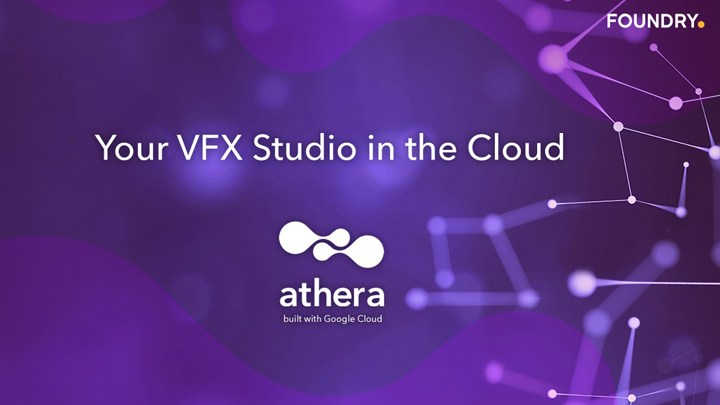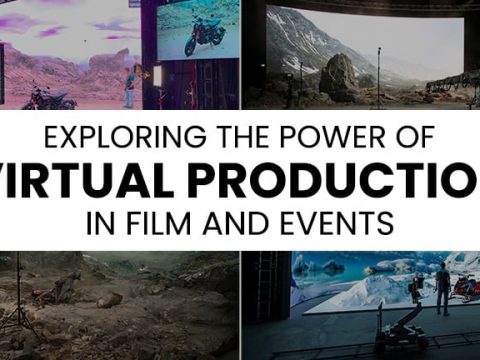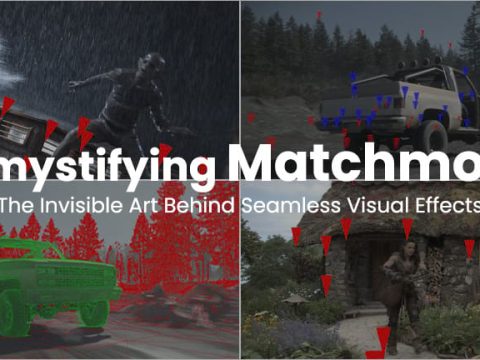If you work in visual effects, computer-generated graphics, or 3D design, Foundry is a VFX pipeline software company you will likely be familiar with.
Established over 20 years ago, in 1996, and based out of London, England Foundry has served up an ever-expanding range of software in the visual effects and 3D content spaces. Their list of clients include the likes of Google, Pixar, Mercedes-Benz and Sony Pictures among others, and if that doesn’t impress you, their 2017 showreel, you can watch it below, definitely will. Studios and individuals worldwide widely use their portfolio of power-packed post-processing tools, including the Nuke compositing tool, the Modo 3D modeling, rendering and texturing suite, and the Flix development VFX pipeline, among many more.
At FMX 2018, one of the foremost conferences dedicated to the world of digital visual arts, Foundry unveiled a new product to add to this already impressive portfolio called Athera. It isn’t a complete bolt from the blue though, because those intimate with the comings and goings of the visual effects world will have heard whispers, caught glimpses and may even have gotten hands-on with the suite when it was in its beta testing phase and went under a different moniker – Project Elara. Before going any further though, let’s understand what Athera brings to the VFX table.
What is Foundry’s Athera and what does it do?
For those unfamiliar with Athera, it is a cloud-based platform with Google that provides cloud services that allow the entire VFX production pipeline to be executed from this single service. It isn’t just the myriad software that makeup Foundry’s portfolio, and third-party apps that tie into VFX workflow, or remote storage for this workflow though because Athera goes above and beyond and also offers top-of-the-line computing capabilities as part of its ambit of services.
Here’s a rundown of the Athera VFX pipeline and the services offered within it:
-
-
Virtual workstations:
As mentioned earlier you can tap into computing capabilities that are tailor-made to run the gamut of software available in the VFX pipeline without faltering. Depending on your needs and resources, you can access the workstations through web browsers or a dedicated interface.
-
-
-
“Context” organization capabilities:
Athera comes with something called “Contexts” essentially projects or distinct pieces of work that you can label and access independently. You can switch roles of individuals, complete teams and even full-blown organizations working on these projects without having to create a separate one each time. All your files, renders and apps remain locked to these “contexts” making collaborative efforts on projects fairly straightforward.
-
-
-
Secure centralized storage:
Using the cloud allows you to store all your raw data, project files, renders and everything else in a secure and easily-accessible server that is rooted in a cluster of high-performance SSD drives that are dedicated to your project.
-
-
Versatile Applications:
The list of applications for VFX and 3D design available on Athera is staggering. Check out what’s on offer:
- Houdini FX, Power Houdini FX
- Nuke, Nuke X (with Cara VR optional), Power Nuke X
- Nuke Studio, Power Nuke Studio
- Katana + 3Delight, Power Katana + 3Delight
- Modo
- Mari
- Blender
- DJV View
The Power options mentioned in the list above essentially run the software on workstations with twice the capability of standard ones.
Now that we know that Athera is capable of, here are just a few reasons why using a cloud-based VFX pipeline such as this is beneficial for VFX and 3D production houses.
-
-
Powerful rendering capabilities at your fingertips:
Foundry constantly upgrades their GPU-powered workstations and provides you with the latest updates of their software suite meaning you don’t need to make an expensive outlay on all the necessary hardware and software if you chose to go down the Athera route.
-
-
-
Pay for what you use:
Speaking of outlay, Athera allows you to block up the software for 30 days at a time, and you can add and remove software access based on your needs. Prices start from $244 a month for Blender and DJV View and the most expensive piece of kit is enhanced Power Nuke Studio at $1,388 per month. On the rendering side, Athera charges by the second to ensure you don’t pay for more than what you need, and prices range from $0.43-$3.00 per hour. You can see the entire price list and choose what you want based on your needs.
-
-
-
Security:
Since your data is stored on a Google-powered cloud server, security isn’t an issue. All the data is encrypted when uploaded and remains so even when stored, and Athera has been audited by external data security experts who have given it their seal of approval. This means you don’t have to worry about hacks or data theft if you choose to use Athera.
-
-
-
Flexibility:
Apart from the flexibility that Athera offers in terms of choosing which specific software you need and billing by the second for renders, you also have the option to access the virtual workspace from different locations and devices since it isn’t bound to physical servers. This allows collaborative teams that are spread out geographically to easily come in, do what they need to do, and then allow for the project to move on to its next step without the need to physically transfer the files and data, saving a lot of time and really streamlining the entire production process.
-
Clearly, Athera and this cloud-based approach to VFX production offers a host of benefits. All you need is a fast enough internet connection, something that’s becoming more and more accessible in all four corners of the world. It is no surprise then that this tech is being lauded as the way forward, and it is only a matter of time before more cloud-based VFX services similar to this begin to crop up.








